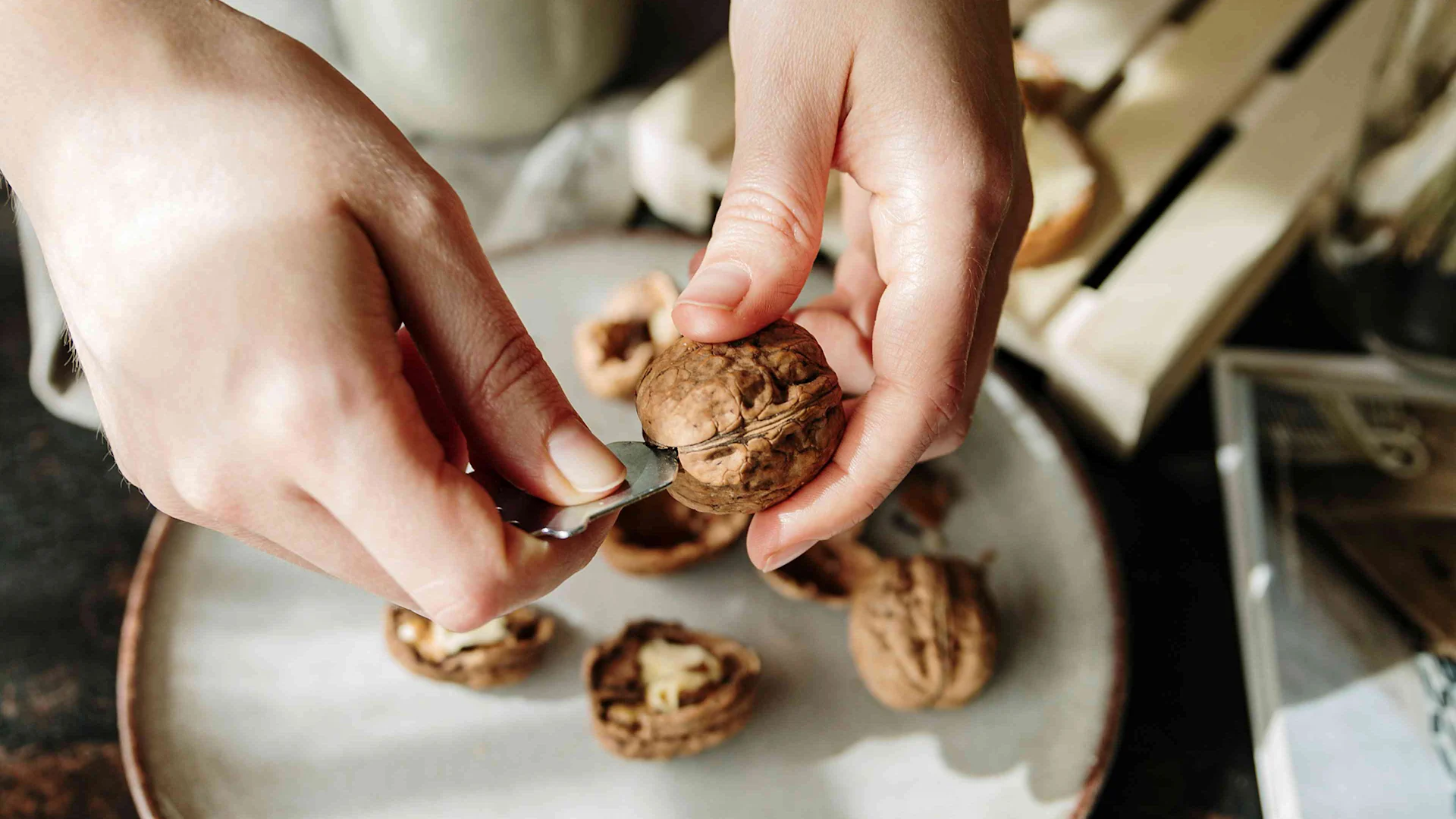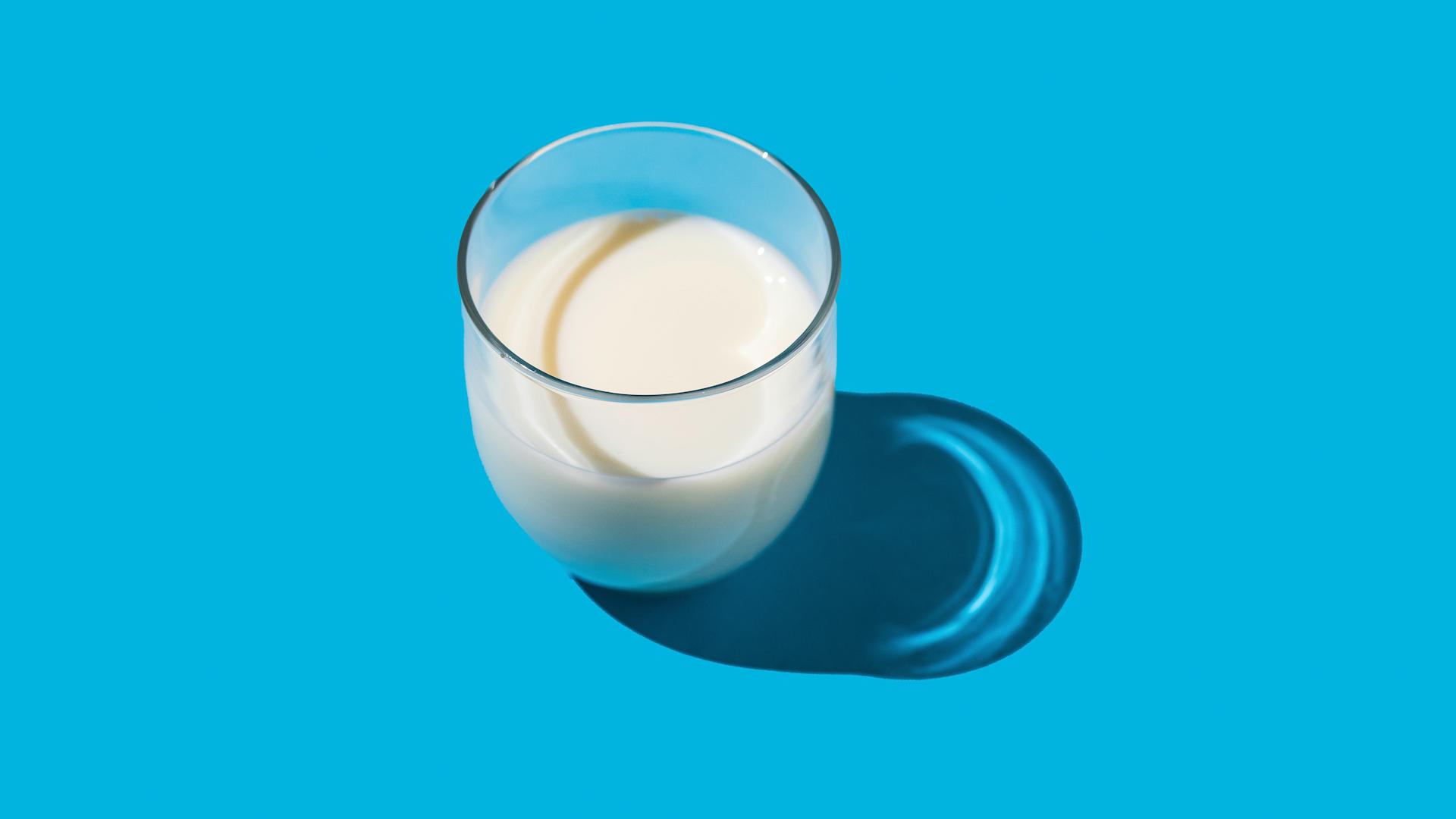
Sustainable products
How to crack nuts without a nutcracker
Got a bagful of nuts, but no nutcracker? With our hacks you won’t even need one!
navigation

Supermarket
We explain how pasteurised and UHT milk differ - and why milk is white.
These three types of milk differ in the degree of processing and their fat content. Raw milk is untreated milk. It has a natural fat content of 3.9-4.2 percent. Skimmed milk is made from raw milk. The fat layer - the cream - is skimmed off using a centrifuge. After that, the fat content is a maximum of 0.5 percent. Whole milk is produced by adding fat to skimmed milk. Standardised whole milkhas a fat content of 3.5 percent.
This is due to the fact that the fat floats in tiny globules in the milk. When light hits these globules, they reflect it in all directions as well as from one globule to another. This back and forth causes the individual colour components of the light spectrum to mix, which looks white to us. This also means that the more fat is floating in the milk, the purer white it appears.
Here milk is heated to 72-75 degrees Celsius for a maximum of 30 seconds and then immediately cooled down again. The heat kills most germs as well as all pathogenic bacteria. This extends the shelf life of the milk. Unopened, pasteurised milk can be kept in the fridge for up to ten days. The procedure was invented by the French chemist Louis Pasteur (1822-1895), hence the name.
Ultra-high temperature or ultra-heat treatment. In this process, milk is heated to 135-155 degrees Celsius for a few seconds and then immediately cooled down again. It is now germ-free and therefore has a longer shelf life than pasteurised milk. UHT milk can be stored unopened for up to 12 weeks without refrigeration. Once opened, it must be kept in the fridge.
A process for distributing the fat globules evenly – homogeneously – throughout the milk. To do this, they are forced through fine nozzles and shrunk mechanically. This prevents a layer of cream from forming on top of the milk. If raw milk is left to stand for longer, the milk fat - i.e. the cream - rises to the surface.
From the evaporation ("condensation") of water during production. About 60 percent of the water is removed from the milk. This is done by heating the milk to 85-100 degrees Celsius and then thickening it under negative pressure at 40-80 degrees Celsius. The milk is then homogenised, packed and sterilised. Unopened, it keeps for up to 12 months.
Both are by-products. Whey is the yellowy-green liquid that is left over after milk coagulates into cheese. Buttermilk is the low-fat residual milk that develops when cream is churned into butter.
Because the dairy farms from which they originate must comply with higher animal husbandry and environmental protection standards. In order to obtain the Bio Suisse label, all the parts of their agricultural business must be organic. In addition to spending more time outside, the cows only receive organic feed that has been grown without chemical pesticides or synthetic fertilisers. Most of their feed must be grass or hay. All milk sold under the Migros Bio brand bears the Bio Suisse bud.
This is milk from cows that, amongst other things, spend more time in the open air than conventionally reared animals: in summer, they are out to pasture for at least 26 days a month, and in winter they are allowed outside for at least 13 days. In addition, their feed consists mainly of grass from meadows in summer and hay in winter. They receive very little concentrated feed. Grass-fed cow's milk was developed by IP-Suisse (the Swiss Association of Integrated Producers) as a standard for sustainably produced milk in Switzerland. Since July 2021, all types of drinking milk sold at Migros have been produced in accordance with the IP-Suisse requirements for grass-fed cow's milk.
At just under 5 percent, lactose (or milk sugar) is the second most predominant constituent of raw milk after water (about 88 percent). It is broken down in the small intestine with the aid of the enzyme lactase. People who are lactose intolerant are deficient in lactase, be it for heredity reasons or through illness. Lactose therefore reaches the large intestine undigested, where bacteria ferment it, resulting in bloating, diarrhoea or cramps. People who are lactose intolerant should use lactose-free milk or plant-based milk alternatives.
A thick milk with a sour taste. It is produced by adding bacterial cultures to pasteurised milk. Within three to six hours, the bacteria convert part of the lactose (milk sugar) into lactic acid, which gives sour milk its characteristic taste. At the same time, the milk protein flocculates, making the milk thick. Different acidified dairy products can be produced depending on which bacteria are used, for example yoghurt, sour cream or kefir.
Above all, it tastes especially delicious. Golden milk is a traditional Indian drink. Its intense yellow colour is created by adding turmeric to the milk. The spice contains the golden-yellow active ingredient curcumin, a powerful dye. Other ingredients include ginger, cinnamon and honey. Recipe to prepare your own golden milk
You can find out more about our commitment to a wide range of sustainable products in the stories.